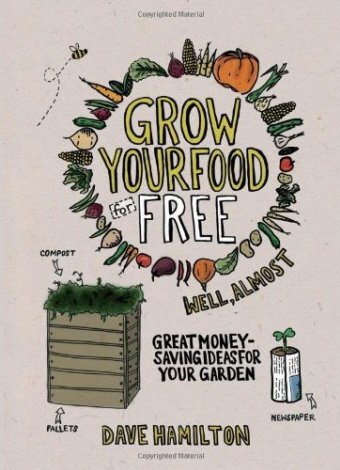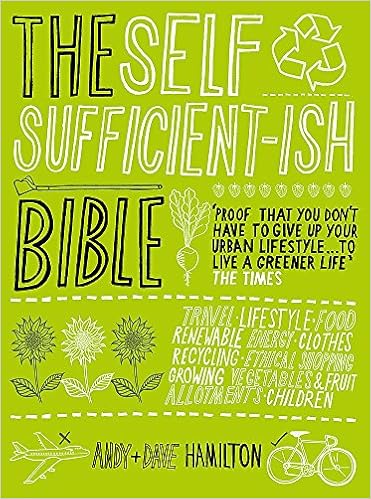Updated: November 11, 2020
It’s obvious why I was drawn to UK author Dave Hamilton’s book called Grow Your Food for Free (Well Almost). Saving money by growing better food in my backyard has long been one of my favorite topics.
But after reading the book, I found myself just as intrigued by the author and the author’s family as I was by the book itself.
Let’s take a sec to get the legal words out of the way. This article may contain affiliate links. That means if you click and buy from my partners, I will make a tiny amount of money at no cost to you. This in no way affects my recommendations.
Hamilton must have a pretty unusual family life. Why? For one thing, he writes a blog with his identical twin brother, Andy Hamilton, called the Self Sufficient ish. That’s not a typo. It’s spelled exactly like that.
Leaf mold is an interesting alternative to peat in seed starting mix.
— Suburban Hobby Farmer
His blog is about all things urban homesteading and self-sufficiency. Together the twin brothers have also written a book called the Self Sufficient ish Bible and Andy authored a third book called Booze for Free
.
Can you just imagine when the extended family gets together for a holiday meal?
Between the homemade spirits, foraged foods and backyard grown heirlooms, I bet the identical twin brothers (you can’t tell them apart) probably have a really interesting Christmas menu.
The Hamilton Twins
Come to think of it, wouldn’t the Hamilton twins make a great idea for a TV sitcom? Can you just imagine the trouble moonshine-making, wild-food-foraging, backyard-chicken-raising, identical twins could get into?
Hollywood, are you listening?

Dave Hamilton is the one of the two twins that seems to lean more towards gardening. In Grow Your Own Food For Free, he shows readers how to combine dumpster diving (called skip diving in the U.K.) and other money saving ideas so that you can live large on vegetables and fruits grown in the backyard.
Although we don’t talk much about dumpster diving here on Suburban Hobby Farmer, we do discuss many of the same ideas for thrifty fruit and vegetable gardening.
Leaf mold
One great idea that I haven’t covered here and hasn’t been written about much in the homesteading or vegetable gardening blogs is to use leaf mold instead of peat as an ingredient in seed starting mix.
As you may have heard, peat is often harvested unsustainably. Plus, it’s expensive if you’re starting a lot of seedlings.
Leaf mold is an interesting alternative to peat in seed starting mix.
To get free leaf mold for seed starting, you grind up leaves and let them sit in a pile for two years. Then pass the material through a screen to harvest only the smallest particles. This gives you a good peat replacement.

Not having tried leaf mold in seed starting mix yet, I think it does sound like a pretty good idea.
But there’s a couple of things to consider. You’ll want to check the type of leaves you have available and make sure the pH is balanced.
Oak leaves, for example, will create acidic leaf mold, which may not be right for your seedlings.
Related: Make Your Own Seed Starting Mix
The other potential problem is weed seeds.
Peat, compared to leaf mold, is usually weed seed free. So it would be best if you were able to sterilize the leaf mold. Otherwise, you’ll be getting a lot of weeds with your seedlings.

Most of the other ideas in Dave’s book have been covered frequently in the gardening blogs. Homemade compost bins, paper seedling pots, foraging for wild vegetables, seed saving, season extending structures are examples of the subjects Dave covers.
Although most of the ideas are not new, Grow Your Food for Free is a comprehensive resource for money-saving gardening ideas that can save you a lot of time searching around the Internet.
And it’s entertaining, too.
Related articles:
- How to Get Free Seeds from the US Government
- How to Start Seedlings More Cheaply
- Soil Block Makers Vs. Paper Pots. Which is Better for Starting Seeds?
Suburban Hobby Farmer is a participant in the Amazon Services LLC Associates Program, an affiliate advertising program designed to provide a means for sites to earn advertising fees by advertising and linking to amazon.com.